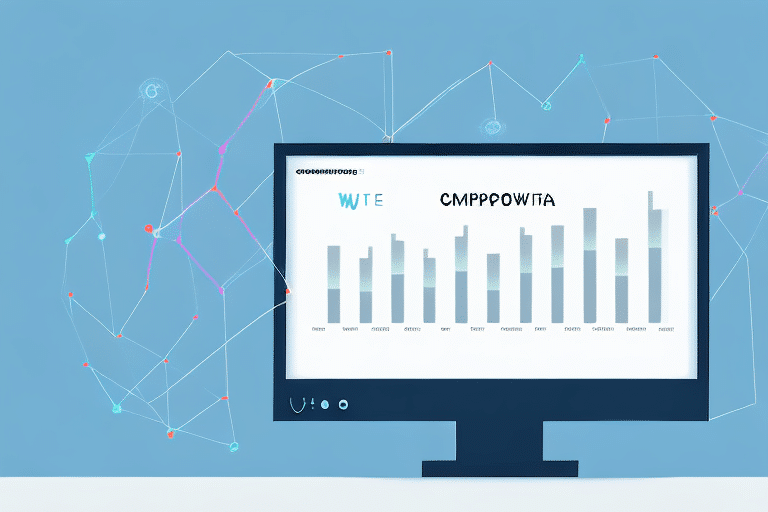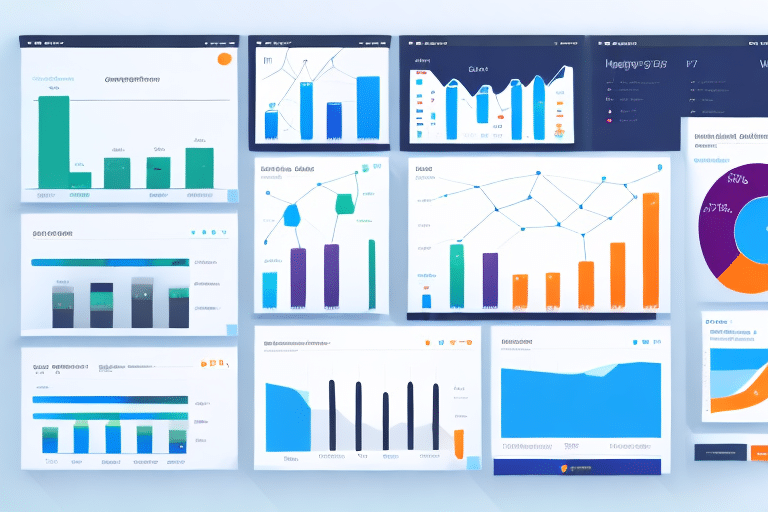Measuring Website Traffic: Why It Matters for E-Commerce Operations
As an e-commerce business, one of your primary goals is to drive traffic to your website. However, merely attracting visitors isn't enough – you also need to measure their behavior and engagement to track your progress and optimize your operations continually. According to a Statista report, e-commerce sales worldwide are expected to reach $6.3 trillion by 2024, underscoring the importance of effective traffic measurement to stay competitive.
The Importance of Measuring Website Traffic for E-Commerce Businesses
Measuring website traffic is crucial for e-commerce businesses as it provides insights into how users interact with your site, enabling data-driven decisions to enhance user experience, streamline the sales funnel, and boost conversion rates. According to Business Insider, companies that utilize data effectively are five times more likely to make faster decisions than their competitors.
One of the key benefits of measuring website traffic is the ability to identify high-performing and underperforming pages. By analyzing metrics such as page views, bounce rates, and exit rates, you can determine which pages attract the most visitors and which may be causing users to leave your site. This information is instrumental in refining your website's content and design to better align with the preferences of your target audience.
Furthermore, analyzing website traffic can help you identify trends and patterns in user behavior. For instance, you might discover that user engagement spikes during specific times of the day or days of the week. Leveraging this data allows you to optimize your marketing campaigns and content scheduling to target your audience more effectively during these peak periods, ultimately leading to increased conversions and revenue.
Understanding the Basics of Website Traffic Measurement
Website traffic measurement involves collecting data on your website's visitors, including their behavior, interests, and demographics. The most popular tool for this purpose is Google Analytics, which tracks visitors using cookies and tags on your website.
By using Google Analytics, you can track a wealth of data, including:
- Number of website visitors
- Visitor demographics
- Source of website traffic (e.g., search engines, social media, direct)
- Pages visited per session
- Time spent on the site
- Conversion rates and revenue
However, it's important to note that website traffic measurement isn't just about collecting data. It's also about analyzing and interpreting that data to make informed decisions about your website's performance and how to improve it. This is where the real value of website traffic measurement lies.
For example, if you notice that visitors are spending very little time on a particular page, it may indicate that the content on that page needs to be improved or updated. Similarly, if a large percentage of visitors are leaving your website after viewing a certain page, it may suggest a problem with that page's design or functionality.
Key Metrics to Measure Website Traffic for E-Commerce Operations
Now that we understand what data we can collect, what metrics should we focus on to enhance our e-commerce operations?
- Bounce rate: The percentage of visitors who leave after viewing only one page. A high bounce rate may indicate that your website isn't engaging visitors enough or that they're not finding what they're looking for.
- Conversion rate: The percentage of visitors who complete a specific action, such as making a purchase or submitting a form. Higher conversion rates are essential for maximizing sales.
- Time on site: The average time visitors spend on your website. A higher time on site generally indicates that your website is engaging enough to keep visitors interested.
- Pages per session: The average number of pages visitors view during a session. This metric is closely tied to time on site and indicates how much visitors are exploring your website.
In addition to these key metrics, there are a few others that can provide valuable insights into your e-commerce operations. One such metric is cart abandonment rate, which measures the percentage of visitors who add items to their cart but don't complete the purchase. According to a Shopify report, the average cart abandonment rate across e-commerce sites is approximately 70%, highlighting the critical need to optimize the checkout process.
Another important metric is customer lifetime value (CLV), which measures the total amount of money a customer is expected to spend on your website over their lifetime. By understanding CLV, you can make informed decisions about how much to invest in customer acquisition and retention strategies.
How to Analyze Website Traffic Data to Improve E-Commerce Operations
Once you've collected data, it's time to analyze it to drive improvements. One effective method is cohort analysis, where you group visitors based on shared characteristics such as behavior or demographics over time.
For example, you can create a cohort of visitors who first visited your website in January and track their conversion rates over the subsequent months. This data can help you identify trends and patterns that inform your marketing and sales strategies.
Another valuable approach is A/B testing, which involves creating two versions of a webpage and randomly showing each version to different visitors. By comparing the performance of each version, you can determine which design or content elements are more effective at driving conversions.
Additionally, it's important to analyze your website's bounce rate. A high bounce rate can indicate that your website isn't engaging or relevant to your target audience, necessitating changes to your design or content strategy.
The Benefits of Measuring Website Traffic for E-Commerce SEO
Measuring website traffic is not only beneficial for sales and marketing but is also essential for optimizing your search engine optimization (SEO) efforts. By analyzing your website traffic data, you can identify which keywords, landing pages, and content are driving the most traffic to your site.
Understanding which pages perform well helps you identify areas that need improvement. By optimizing these pages for SEO, you can enhance your website's overall search engine rankings, leading to increased visibility, more website traffic, and higher sales.
Furthermore, measuring website traffic provides deeper insights into your audience. By analyzing the demographics and behavior of your visitors, you can tailor your marketing and advertising efforts to better reach and engage your target audience, resulting in more effective campaigns and higher conversion rates.
Using Google Analytics to Track and Measure Website Traffic for E-Commerce
Google Analytics is a powerful and versatile tool that allows you to track website traffic and measure various metrics, including sales and revenue. By integrating e-commerce tracking on your website, you can monitor key metrics such as transaction volume, revenue, and conversion rates.
Additionally, Google Analytics integrates seamlessly with Google Ads, enabling you to track the effectiveness of your advertising campaigns and their impact on website traffic and sales.
Another useful feature of Google Analytics is the ability to track user behavior on your website. You can identify which pages are most popular, how long users stay on each page, and where they exit your site. This information is invaluable for identifying areas for improvement and optimizing your website for a better user experience.
Moreover, Google Analytics offers real-time reporting capabilities, allowing you to see how many users are currently on your website, their geographic locations, and the pages they are viewing. This feature is especially useful during peak traffic times or when launching a new product or promotion.
The Role of Social Media in Driving Website Traffic for E-Commerce Sites
Social media platforms like Facebook, Twitter, and Instagram can be powerful channels for driving website traffic and boosting e-commerce sales. By leveraging these platforms, you can increase brand awareness and engagement, resulting in more website visitors and potential customers.
To maximize the impact of social media on your website traffic, it's essential to measure your social media performance. Tools such as Google Analytics and Hootsuite can provide valuable data on social media engagement, including likes, shares, clicks, and revenue generated.
In addition to measuring social media traffic, developing a robust social media content strategy that aligns with your e-commerce goals is crucial. This involves identifying your target audience, understanding their interests and pain points, and creating content that resonates with them. Effective content strategies increase the likelihood of social media users clicking through to your website and making a purchase.
Partnering with influencers in your industry is another effective strategy to drive website traffic through social media. Influencers with large followings can promote your products to their audience, leading to increased brand visibility, website visits, and sales.
Best Practices for Measuring and Analyzing Mobile Website Traffic for E-Commerce
With the mobile-first nature of today's internet usage, it's imperative to measure and analyze mobile website traffic to fully optimize your e-commerce operations. Key metrics to track include click-through rate, conversion rate, and page load speed.
To optimize your mobile website, ensure that your site is responsive and that your content is designed to be mobile-friendly. Utilizing tools such as Google's Mobile-Friendly Test can help you determine if your website performs well on mobile devices.
Additionally, optimizing page load speed is critical for mobile users, as slow-loading pages can lead to high bounce rates. According to a study by Google, as page load time goes from one second to ten seconds, the probability of a mobile site visitor bouncing increases by 123%.
How to Use Website Traffic Analysis to Optimize Your E-Commerce Sales Funnel
Your e-commerce sales funnel represents the series of steps that a visitor takes before making a purchase on your website. By analyzing website traffic data, you can pinpoint areas within your sales funnel that require improvement.
For example, if data shows that visitors are leaving your website after viewing the product page but before adding items to their cart, it may indicate that the product descriptions or images are not compelling enough. In this case, enhancing product copy, incorporating high-quality images, or adding customer reviews can encourage more conversions.
Furthermore, analyzing the checkout process can reveal friction points that may be causing cart abandonment. Streamlining the checkout process by reducing the number of steps, offering multiple payment options, and ensuring a mobile-friendly interface can significantly improve conversion rates.
Common Mistakes to Avoid When Measuring Website Traffic for E-Commerce Operations
When measuring website traffic, several common mistakes can hinder your ability to gain meaningful insights and improve your e-commerce operations:
- Incorrect setup of analytics tools: Failing to properly configure tools like Google Analytics can lead to inaccurate data collection.
- Neglecting to track e-commerce-specific metrics: Essential metrics such as conversion rates, average order value, and cart abandonment rates should not be overlooked.
- Not segmenting traffic data: Analyzing traffic without segmentation can obscure important trends related to demographics or user behavior.
- Skipping A/B testing: Without A/B testing, it's challenging to determine which website changes lead to better performance.
- Failing to regularly monitor traffic data: Infrequent analysis can cause you to miss out on timely insights necessary for swift optimizations.
Advanced Techniques for Measuring and Analyzing Website Traffic for E-Commerce Success
To elevate your e-commerce operations, consider implementing advanced techniques for measuring and analyzing website traffic:
- Heatmaps: Tools like Hotjar provide visual representations of user interactions on your website, helping you identify areas that receive the most attention and those that are overlooked.
- User surveys: Collecting direct feedback from visitors through surveys can uncover pain points and areas for improvement that quantitative data might miss.
- Predictive analytics: Utilizing machine learning algorithms to analyze traffic data can forecast future trends, allowing you to proactively adjust your strategies.
Conclusion
Measuring website traffic is essential for e-commerce businesses aiming to optimize their sales funnels, enhance user experience, and increase conversions. By tracking key metrics, analyzing data, and employing advanced techniques, you can gain a competitive edge, make informed decisions, and achieve sustained e-commerce success.






















